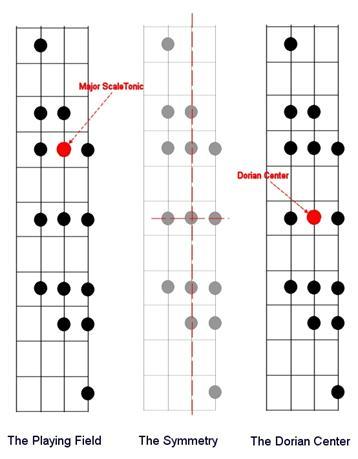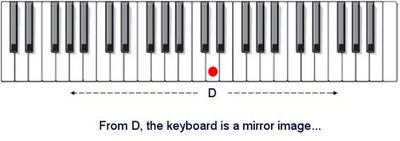« More fretboard geometry--Maj7 arpeggios |
Main
| Dirty it up »
 October 28, 2010 | Fifths, Symmetry and You: Perceptual Economy October 28, 2010 | Fifths, Symmetry and You: Perceptual Economy
This week's Tips article is another terrific entry from staff contributor and music software theory Guru, Craig Schmoller, and a timely third part to our "Geometry" Trilogy. By now, you should already be familiar with his Mando ModeExplorer , one of the most authoritative and concise fretboard software programs available for mandolin, and his recently released Jazz CitternExplorer, an invaluable resource for anyone wanting to dive deeper into 5-string fifths tuned instruments.
Check them out again:
Jazz CitternExplorer
Mando ModeExplorer
"According to Gestalt theory, the perceptual system works on economic principles and tends to reach the maximum efficiency (i.e., increase of quality, goodness, and accuracy) with minimum invested energy (i.e., reduction of processing load)." - informaworld.com abstract of "Symmetry, complexity and perceptual economy" by Markovicacut and Gvozdenovi
Simple is way better.

Because you see two happy mandolins in the inkblot, we can conclude you are happy, talented, and well-adjusted. We can also conclude that every time you walk by that thing, you feel compelled to pick it up and play. The thing is addicting. But a big part of the reason why the mandolin consumes our free time the way it does is because of the elegance and symmetry, and simplicity of Fifths Tuning.
From time to time I have heard a mandolin player say, "I don't get this 'symmetry' thing everyone talks about. What symmetry?" And our poor guitar playing cousins with that weird fourths-with-a-major-third-speed-bump Standard Guitar Tuning really don't know what they're missing. The symmetry, once you see it, makes things simple. Psychologists have long known that a simple, repeating, predictable pattern makes things easy for us humans to deal with. And the mandolin is one big predictable pattern!
Let's take a look at some of the enormous symmetrical advantages of Fifths Tuning
Visualizing Patterns: Perceptual Economy
One of the most important things we can do to get the most out of a mandolin, or any fifths-tuned instrument, is to find the intervals of the major scale (w-w-h-w-w-w-h) and see how the relationships lay out on the neck. The beauty of the consistent fifths (as opposed to other tunings) is in the symmetries you find on the instrument. The major scale, for example, produces a nice compact symmetry that makes complete visualization and navigation of the instrument a snap. Let's call this the "Playing Field."

Our playing field represents notes of the major scale spread out over a couple octaves. We find that there is a simple, easy-to-navigate, symmetrical pattern that emerges. It's the same from top to bottom, left to right.
The symmetry is actually discovered on the second degree of the major scale (marked as the "Dorian Center) which is the tonic of the dorian mode (the ii of the major scale).
So how did this happen? Why is it so easy to see this simple, predictable, memorable pattern on the mandolin? Well, that goes back to how the major scale works. Look for example, at a keyboard. You'll notice that from D upward, you see a mirror-image of D going down:

This yields the dorian intervals going up the scale from the D, w-h-w-w-w-h-w, and the same pattern going down from the pivot, w-h-w-w-w-h-w. It really makes navigation on the instrument a breeze. We're not talking about putting it on autopilot and playing junk - Rather, the predictability eliminates a lot of work. Perhaps we can refer to it as "Perceptual Economy", i.e., symmetry=simplicity, lack of symmetry=complexity.
And, as always, we can take this symmetrical pattern and move it all around the neck, move it over a string - We always "see" where we are all the time, and there's no energy spent figuring things out. We can just get down to the business of PLAYING.
Perceptual Economy. Another good reason to love this instrument.
Further:
Fretboard Geometry
More fretboard geometry--Maj7 arpeggios
The Seven Chord Naming Rules
The Theory of Available Tensions
Posted by Ted at October 28, 2010 5:16 AM

Disclaimer: In the 'Information Age' of the 21st Century,
any fool with a computer, a modem, and an idea can
become a self-professed 'expert." This site does not
come equipped with 'discernment.'
|



